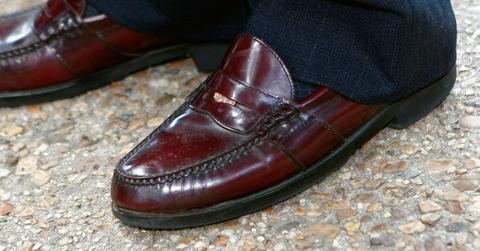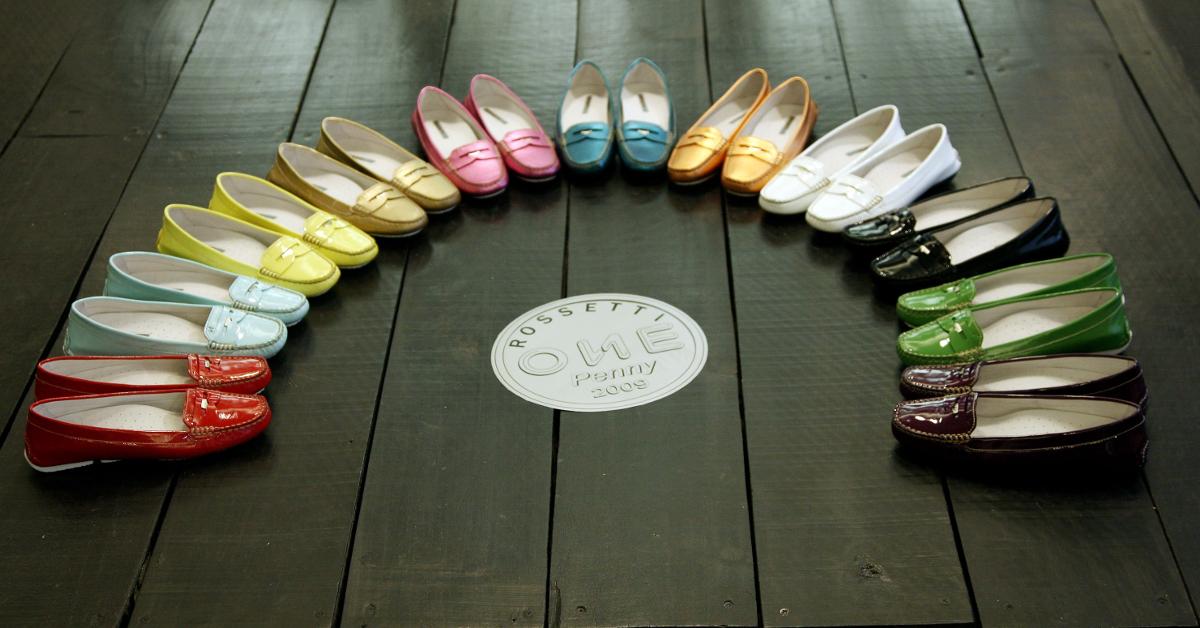Did Penny Loafers Really Have Coin Slots so Folks Could Make Two-Cent Phone Calls?
Published Aug. 3 2021, 10:40 p.m. ET

Some trends carry on through time to the point when their origins become a foggy memory. Like why do folks kiss under the mistletoe during Christmastime? As it turns out, the plant is an aphrodisiac for sheep, so maybe some shepherds got to thinking, "Well, if it makes these little fluffballs all hot and bothered, maybe it'll make me go 'baaahhhh' too..."
When it comes to clothing, certain ongoing trends of classic items have taken on new meanings too. Like the small pocket in jeans and pants. No, they originally weren't designed to house condoms or tabs of acid. Instead, they were meant to carry pocket watches. And what about those tiny slots in penny loafers? Were they really designed for a coin to be placed in?
Why do penny loafers have slots for a coin?
The prevailing story is that the shoes were designed to house two pennies as the first phone boxes that were installed cost very little to make a phone call — only two cents. So, the idea is you always had an emergency two little bits of copper in your feet that you could then use to make an emergency phone call after you found yourself in West Jersey after an exceptionally raucous night of imbibing spirits in NYC.

The problem is there's really no historical data to prove that this explanation, as cool and convenient as it may sound, is actually true. When phones were first introduced in the 1890s, it cost a nickel to make a local phone call. If you were trying to make a long-distance call, that could cost you up to a dollar, which was a heck of a lot of money during a time when $20 was a week's pay for most jobs.
In fact, that nickel price stayed put for a lot of local phone booths in some areas up until the 1970s, but generally, phone calls began to cost a dime in the 1950s, and then in 1984, the price was raised to a quarter in some parts of the country. It all depended on your location. So maybe folks were putting dimes in them, then, to make phone calls?
Again, that could be the case, or it really could just be another reason entirely.
According to one Quora post, the "slot" in penny loafers was ultimately just a "design element." People who saw that little slot decided to put stuff in it, and a penny or dime fit perfectly fine in it.
But Tricker's, a formal boutique based in London, has even more backstory to the history of these shoes, which went by the original name "Weejun":
"In 1934, G. H. Bass made his first version of the loafer which he called Weejuns. This appears to be a play on words on the origin of the original designer — Norwegian. A distinctive feature of this new design was a strip of leather stitched across the saddle of the shoe, featuring a shaped cutout."
The post continues: "In 1950s America before trainers were invented, the Weejun became the shoe of choice for young men and students. It became fashionable to keep a dime in the half-moon cut-out slot of the leather strip. This eventually gave the shoes their colloquial name of penny loafer, which is still used today."
So people called the Weejun penny loafers, and folks were really putting dimes in them because, well, it was just a fad that came to be. Sort of like Pogs or dudes who wore those weird crop-top Everlast shirts.